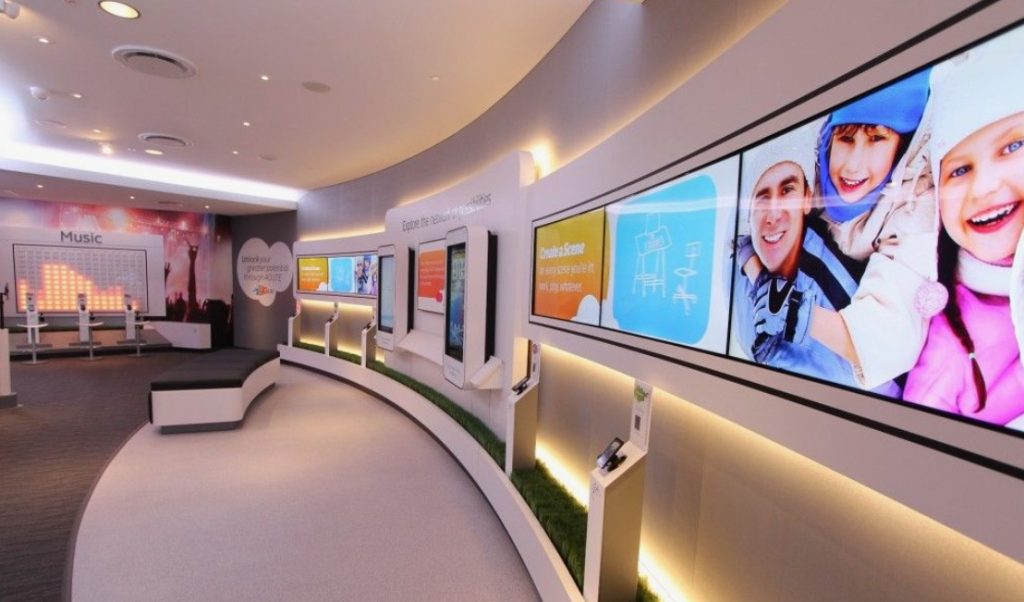
Enhancing Campus Communication with Digital Signage: A Comprehensive Guide
In the fast-evolving landscape of education, effective communication is the backbone of a successful campus. It ensures that students, faculty, staff, and visitors are informed, engaged, and connected. Digital signage, like the innovative solutions provided by Aristo Star, has emerged as a game-changing tool to meet these needs, offering a modern, versatile, and highly impactful medium for disseminating information, promoting events, and fostering community spirit.
This comprehensive guide delves deeper into the many ways digital signage is transforming communication on campuses, its specific applications, benefits, and the considerations institutions must address to maximize its potential.
Applications of Digital Signage in Campus Communication
Digital signage serves as a multipurpose communication platform that can be adapted to meet the diverse needs of educational institutions. Here’s an in-depth look at its applications:
1. Information Dissemination
Information is at the core of campus life, and digital signage provides an effective way to deliver it. Traditional methods like bulletin boards or paper notices are slow, prone to errors, and often fail to grab attention. Digital signage, on the other hand, ensures timely, accurate, and visually appealing communication. It can display:
Class Schedules and Updates: Informing students of class timings, cancellations, or reschedules in real time.
Building Notices: Sharing closures, maintenance schedules, or holiday hours for libraries, gyms, or administrative offices.
Cafeteria Menus and Specials: Keeping students informed about daily meal options, dietary details, and promotional offers.
Event Listings: A consolidated view of upcoming events such as student club meetings, workshops, and performances.
This functionality is especially useful during busy periods like exam season or orientation week when clear and concise information is critical.
2. Event Promotion
Universities are bustling hubs of activity, and digital signage amplifies the visibility of these events. Unlike traditional posters or banners, digital displays can combine visuals, animations, and videos to create eye-catching advertisements for:
Career Fairs: Highlighting opportunities for students to connect with potential employers.
Graduation Ceremonies: Showcasing schedules, speakers, and instructions for graduates and attendees.
Sporting Events: Promoting team schedules, match updates, and ticket sales.Guest Lectures and Seminars: Featuring profiles of speakers, topics of discussion, and registration details.
The dynamic nature of digital signage ensures that event promotions remain fresh and relevant, increasing attendance and participation.

3. Real-Time Updates
One of the standout features of digital signage is its ability to provide real-time updates. This is particularly valuable in dynamic environments where information is constantly changing. Examples include:
Emergency Alerts: Integrated with emergency systems, digital signage can instantly broadcast warnings about fires, severe weather, or security threats.
Weather and Traffic Updates: Informing commuters of weather conditions or detours that may impact their journey.
Last-Minute Changes: Keeping everyone informed about sudden shifts in schedules, such as room changes for classes or canceled events.
This immediacy ensures that information reaches the right people at the right time, enhancing the overall efficiency of campus operations.
4. Building Community and Showcasing Achievements
A campus thrives on its sense of community, and digital signage can play a significant role in nurturing it. By celebrating the successes of students, faculty, and departments, it fosters pride and motivation. Examples include:
Student Spotlights: Showcasing outstanding academic, athletic, or artistic achievements.
Department Milestones: Highlighting significant accomplishments, such as research breakthroughs or awards.
Competition Updates: Promoting participation in contests, olympiads, and intercollegiate events.
When students see their peers recognized on prominent displays, it cultivates a culture of encouragement and excellence.
5. Enhancing Safety and Emergency Preparedness
The safety of students and staff is a top priority for any institution. Digital signage enhances emergency preparedness by:
Broadcasting Safety Instructions: Clear, step-by-step guidance for evacuation or lockdown situations.
Alerting Specific Areas: Targeting displays in affected zones to provide localized information.
Displaying Visual Cues: Using maps and diagrams to show emergency routes and assembly points.
These capabilities reduce confusion and ensure a faster, more organized response during emergencies.
6. Interactive Features for Navigation and Engagement
Large campuses can be difficult to navigate, especially for newcomers. Digital signage equipped with interactive features, such as touchscreens, serves as a virtual guide:
Interactive Maps: Allowing users to search for specific locations and get step-by-step directions.
Campus Directory: Listing departments, offices, and key personnel with contact details.
Event Details: Providing additional information about ongoing and upcoming activities.
This functionality not only improves navigation but also enhances the user experience for visitors, prospective students, and staff.
7. Enhancing the Learning Environment
Digital signage is not limited to common areas; its integration into classrooms can transform the learning experience:
Lecture Summaries: Displaying key points and summaries to aid comprehension.
Educational Videos: Playing supplementary videos and multimedia content to enrich lessons.
Interactive Learning Tools: Enabling collaborative activities through touchscreen displays.
These features create a more engaging and interactive educational environment.

Benefits of Digital Signage on Campus
1. Centralized Control and Management
With advanced digital signage software, campuses can manage all displays from a single platform. This centralized system enables:
Consistency Across Screens: Ensuring uniform messaging and branding across campus.
Remote Management: Updating content instantly without the need for on-site adjustments.
Streamlined Operations: Reducing the time and effort required for communication tasks.
2. Customizable Messaging
Different areas of a campus serve different audiences. Digital signage can be tailored to meet these unique needs:
Student Lounges: Displaying announcements about extracurricular activities, social events, and entertainment.
Administrative Offices: Sharing enrollment deadlines, policy updates, and financial aid information.
Libraries: Promoting e-catalogs, new arrivals, and quiet study zones.
This targeted approach enhances the relevance of the information being shared.
3. Promoting Sustainability
Digital signage significantly reduces paper usage, aligning with sustainability goals and minimizing waste. It demonstrates an institution’s commitment to environmental responsibility, which resonates with students and staff alike.
Challenges and Considerations
To maximize the benefits of digital signage, institutions must address the following:
Content Accessibility: Ensure that displays are accessible to students with disabilities by incorporating features like closed captions, audio options, and high-contrast visuals.
Data Privacy: Implement robust security measures to protect sensitive information.
Content Freshness: Regularly update content to keep it engaging and relevant.
Cost Management: While digital signage is a valuable investment, institutions must plan for initial setup costs and ongoing maintenance.
Future Trends in Digital Signage for Education
The evolution of technology is opening new possibilities for digital signage on campuses. Emerging trends include:
AI Integration: Leveraging artificial intelligence to personalize content for different audiences.
Augmented Reality (AR): Enhancing navigation and learning experiences with interactive AR features.
Cloud-Based Management: Enabling greater scalability and flexibility in content management.
Case Study: Aristo Star’s Contributions to Campus Transformation
Dubai-based Aristo Star is a pioneer in customer experience management, offering solutions like digital signage, queue management systems, and business intelligence tools. Their technologies have been successfully implemented in schools and universities, enhancing operational efficiency and improving the student experience.
By adopting Aristo Star’s solutions, campuses can integrate digital signage with other systems, such as library catalogs and feedback platforms, creating a cohesive communication network.
Conclusion
Digital signage is more than just a communication tool—it’s a platform for enhancing engagement, building community, and driving efficiency. From promoting events to improving safety and enriching the learning environment, its applications are vast and impactful. As educational institutions continue to embrace digital transformation, digital signage will remain a cornerstone of modern campus communication strategies, ensuring a connected, informed, and inclusive environment for all.
Basketball lover, cooker, music lover, loves to talk about different topics. Let’s chat.